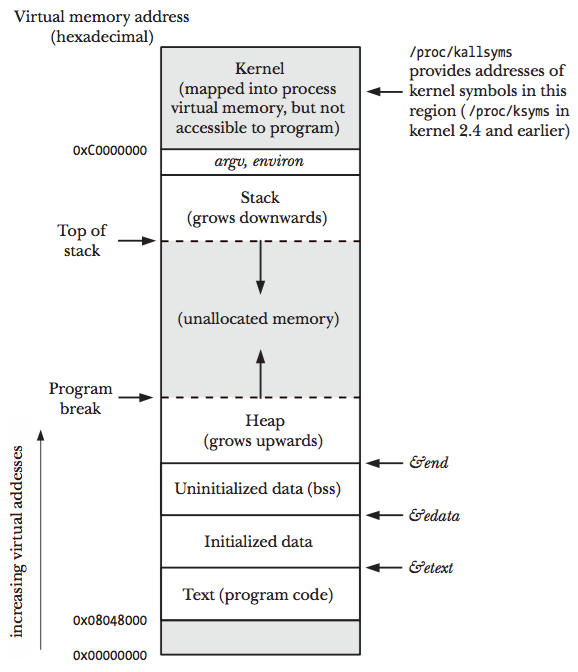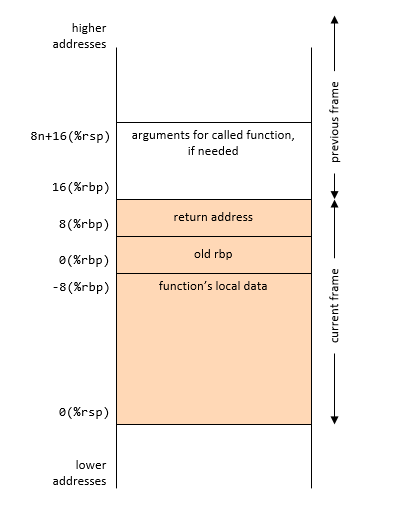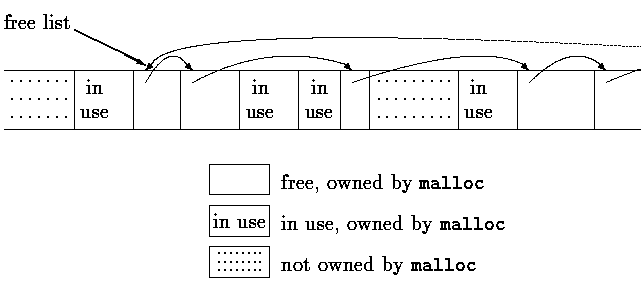函式呼叫篇
你所不知道的C語言:函式呼叫篇
函式呼叫和計算機結構的高度關聯 Copyright (慣C) 2015, 2016 宅色夫
- 早期 C 語言 (1972-1973) -> K&R C (1976-1979) -> ANSI C (1983-1989) -> ISO
- ANSI C -> C++ (1985-) # 融合 Simula 67 和 Ada 特色
- Cfront: C with class
- source: History of C
- 許多程式語言允許 function 和 data 一樣在 function 內部定義,但 C 語言不允許這樣的 nested function,換言之,C 語言所有的 function 在語法層面都是位於最頂層 (top-level)
- nested function 是編譯器的擴展
- 「不允許 nested function」這件事簡化了 C 編譯器的設計
- 在 Pascal, Ada, Modula-2, PL/I, Algol-60 這些允許 nested function 的程式語言中,需要一個稱為 static link 的機制來紀錄指向目前 function 的外層 function 的資訊
- uplevel reference
再論 Function
在 C 語言中,"function" 其實是退化過的形式。以下摘錄 Wikipedia C-- 詞條:
- C is a poor choice for functional languages: it does not support tail recursion, accurate garbage collection or efficient exception handling.
- C-- is a simpler, tightly-defined alternative to C which does support all of these things.
C-- 在 1997 年才提出,距離 C 語言出現整整過了25 年,前者主要的功能是作為編譯器的 IR (中間表示式),主要用於 Glasgow Haskell Compiler (縮寫 ghc,是 Microsoft Research 一項高影響力的開放原始碼專案)
Process 和 C 程式的關聯
PDP-7 => PDP-11
- PDP-11: MMIO (memory mapped I/O)
- *0x404690 = 1;
IBM PC: 1980s: PIO, inb, outb
runtime = 執行時期
[ source ]
- instructions: 自 object file (ELF) 映射 (map) 到 process 的 program code (機械碼)
- static data: 靜態初始化的變數
- BSS: 全名已 ==不可考==,一般認定為 "Block Started by Symbol”,未初始化的變數或資料
- 可用
size指令來觀察
- 可用
- Heap 或 data segment: 執行時期才動態配置的空間
- sbrk 系統呼叫 (sbrk = set break)
- malloc/free 實際的實做透過 sbrk 系統呼叫
- Stack: 函式呼叫的實做基礎
ELF segment & section
一個 segment 包含若干個 section
$ sudo cat /proc/1/maps | less
55cff6602000-55cff678b000 rw-p [heap]
7fff7e13f000-7fff7e160000 rw-p [stack]
program loader XIP: execution in place
從遞迴學習 function call
[ infinite.c ]
int func() {
static int count = 0;
return ++count && func();
}
int main() {
return func();
}
用 GDB 執行和測試,記得加上 -g
$ gcc -o infinite infinite.c -g
$ gdb -q infinite
Reading symbols from infinite...done.
(gdb) r
Starting program: /tmp/infinite
Program received signal SIGSEGV, Segmentation fault.
0x00000000004004f8 in func () at infinite.c:3
3 return ++count && func();
(gdb) p count
$1 = 524032
如果將 infinite.c 改為以下,重複上述動作:
int func(int x) {
static int count = 0;
return ++count && func(x++);
}
int main() {
return func(0);
}
將得到:
Program received signal SIGSEGV, Segmentation fault.
0x0000000000400505 in func (x=1) at infinite.c:3
3 return ++count && func(x++);
(gdb) p count
$1 = 262016
繼續修改 infinite.c 為以下,重複上述動作:
int func(int x) {
static int count = 0;
int y = x; // local var
return ++count && func(x++);
}
int main() {
return func(0);
}
將得到以下:
Program received signal SIGSEGV, Segmentation fault.
0x00000000004004de in func (x=<error reading variable: Cannot access memory at address 0x7fffff7fefec>) at infinite.c:1
1 int func(int x) {
(gdb) p count
$1 = 174677
stack 裡面有 x (parameter), y (local variable), return address
stack frame
觀察 UNIX Process 中的 stack 空間
$ sudo cat /proc/1/maps | grep stack
7fff7e13f000-7fff7e160000 rw-p 00000000 00:00 0 [stack]
60000~Hex~ - 3f000~Hex~ = 21000~Hex~ = 135168~Dec~
135168 * 4 = 540672
這跟前面的數字很像!
函式就是「做好」與「做滿」
- return address 很重要,不管有沒有選上,都要有 ==退路==
sp = stack pointer; stack register
操作 GDB
[ source ]
(AMD x86_64) A stack frame’s best friends are the two registers rsp and rbp, called the “stack pointer” and the “frame pointer”.
function prologue
function epilogue
(gdb) x /16gx $rsp
檔裡可以沒有註解,註解不能離開檔而存在
延伸閱讀
stack-based buffer overflow
-
- vulnerability in glibc’s DNS client-side resolver that is used to translate human-readable domain names, like google.com, into a network IP address. [ 解說 ]
-
Buffer Overflow : Example of Using GDB to Check Stack Memory
準備
gdb-example.c,其內容為:#include <stdio.h> void foo(char * input){ int a1=11; int a2=22; char buf[7]; strcpy(buf, input); } void main(int argc, char **argv){ foo(argv[1]); }編譯,記得加上 -g 和 -m32
用 i686 架構執行 GDB:
$ setarch i686 -R gdb -q ./gdb-example (gdb) break 6 Breakpoint 1 at 0x804847a: file gdb-example.c, line 6. (gdb) run “whatever” Starting program: /tmp/gdb-example "whatever" Breakpoint 1, foo (input=0xffffd406 "whatever") at gdb-example.c:6 6 strcpy(buf, input);觀察 stack 內容:
(gdb) info frame Stack level 0, frame at 0xffffd180: eip = 0x8048490 in foo (gdb-example.c:6); saved eip = 0x80484da called by frame at 0xffffd1b0 source language c. Arglist at 0xffffd178, args: input=0xffffd40c "whatever" Locals at 0xffffd178, Previous frame’s sp is 0xffffd180 Saved registers: ebp at 0xffffd178, eip at 0xffffd17c (gdb) x &a1 0xffffd15c: 0x0000000b (gdb) x &a2 0xffffd160: 0x00000016 (gdb) x buf 0xffffd165: 0x44f7f9c0 (gdb) x 0xffffd160 0xffffd160: 0x00000016
藏在 Heap 裡的細節
free() 釋放的是 pointer 指向位於 heap 的連續記憶體,而非 pointer 本身佔有的記憶體 (*ptr)。
舉例來說:
#include <stdlib.h>
int main()
{
int *p = (int *) malloc(1024);
free(p);
free(p);
return 0;
}
編譯不會有錯誤,但運作時會失敗:
*** Error in './free': double free or corruption (top): 0x000000000067a010 ***
倘若改為以下:
#include <stdlib.h>
int main()
{
int *p = (int *) malloc(1024);
free(p);
p = NULL;
free(p);
return 0;
}
則會編譯和執行都成功。
因此,為了防止對同一個 pointer 作 free() 兩次的操作,而導致程式失敗,free() 後應該設定為 NULL。
[ ==Homework== ] 為什麼 glibc 可以偵測出上述程式的 "double free or corruption" 呢?
malloc / free
在 GNU/Linux 裡頭觀察 malloc
$ gdb -q `which gdb`
Reading symbols from /usr/bin/gdb...(no debugging symbols found)...done.
(gdb) start
Temporary breakpoint 1 at 0x45d450
...
(gdb) p ((double(*)())pow)(2.,3.)
$1 = 8
(gdb) call malloc_stats()
Arena 0:
system bytes = 135168
in use bytes = 28000
Total (incl. mmap):
system bytes = 135168
in use bytes = 28000
max mmap regions = 0
max mmap bytes = 0
$2 = -168929728
(gdb) call malloc_info(0, stdout)
<malloc version="1">
<heap nr="0">
glibc 提供了 malloc_stats() 和 malloc_info() 這兩個函式,可顯示 process 的 heap 資訊
延伸閱讀
https://sourceware.org/gdb/onlinedocs/gdb/Target-Description-Format.html
malloc: first-fit => https://github.com/jserv/mini-arm-os/blob/master/07-Threads/malloc.c
參考資料
- Function calls in C: the boring specs
- Function calls in C: a practical example
- Glibc malloc internal
- Glibc Adventures: The Forgotten Chunks
- Are We Shooting Ourselves in the Foot with Stack Overflow
- Using GNU’s GDB Debugger: Memory Layout And The Stack
- What is memory safety?
- A Malloc Tutorial
- Understanding the Stack
- How Functions Work
- C Function Call Conventions and the Stack
- How Does a C Debugger Work? (GDB Ptrace/x86 example)
- 8 gdb tricks you should know
- A Quick Tutorial on Implementing and Debugging Malloc, Free, Calloc, and Realloc
- gdb included!
- Understanding C by learning assembly
- Code Injection into Running Linux Application
- Journey to the Stack, Part I
- Anatomy of a Program in Memory
Q&A
-
頻繁地使用
malloc()/free()會產生 memory fragmentation,該如何避免? Hint: memory pool -
C++ 中多了 new/delete 兩個用法,與 malloc() / free() 有什麼樣的差別?
比較建議使用哪一種?http://descent-incoming.blogspot.tw/2013/12/operator-newdelete.html http://stackoverflow.com/questions/3941271/why-are-malloc-and-printf-said-as-non-reentrant -
free完某pointer後是不是一定要做 pointer = NULL? 避免 doubly free
-
如何檢查自己的程式有無memory leak(使用ARM或x86的情況)?
you could try http://valgrind.org/
-
coroutine 主要方法是增加global變數來減少function的中操作stack的存取嗎? 而增加的global變數是化簡原本stack的記憶體存取,ex 在stack重複push位置一樣的值。 depends on implementations => http://fanf.livejournal.com/105413.html => http://blog.linux.org.tw/~jserv/archives/001848.html
-
C 語言是否存在能實現如 C++ RAII 機制的方法? -
C有辦法做到JAVA內的reflection機制嗎? Eg. GLib/GObject GLib/GObject is an object system, with single-inheritance and RTTI (run-time type identification), implemented in C. GObject Introspection
-
之前上課有提到C runtime,C runtime是何時被執行的?每種語言都有自己的runtime嗎?有的話,怎麼知道現在執行的Program需要哪個runtime?http://descent-incoming.blogspot.tw/2016/01/for-stm32f4discovery-12-c.html -
為什麼 linux kernel 裡面很多 function 都要宣告成 static ?? name conflict, abstraction
-
請問前面的圖把Kernel映射進virtual memory有什麼功用嗎?
-
為什麼 free() 不要給 size?
-
setjmp() longjmp()如何實做 error handling ? ref: http://descent-incoming.blogspot.tw/2015/09/c-c-exception-handle.html

